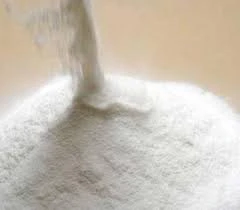
സെപ് . 30, 2024 09:13 Back to list
Understanding HPMC and Its Applications in Various Industries
What is HPMC? An Overview of Hydroxypropyl Methylcellulose
Hydroxypropyl methylcellulose (HPMC) is a versatile cellulose derivative that has gained prominence in various industries due to its unique chemical properties. Derived from natural cellulose, HPMC is produced by treating cellulose with propylene oxide and methyl chloride, resulting in a white, odorless powder that is soluble in water. This compound has become increasingly important in pharmaceuticals, food production, cosmetics, and construction materials, among other fields.
Chemical Structure and Properties
The chemical structure of HPMC is characterized by the substitution of hydroxyl groups on the cellulose polymer backbone. This modification enhances the solubility of HPMC in water, allowing it to form gels and films easily. The degree of substitution—the number of hydroxyl groups replaced—can be adjusted during manufacture, leading to HPMC variants with different viscosity and solubility characteristics. These qualities make HPMC an ideal agent for stabilizing, thickening, and emulsifying formulations.
Pharmaceutical Applications
In the pharmaceutical industry, HPMC is primarily used as an excipient in drug formulations. It acts as a binder in tablet formulations, ensuring that the active pharmaceutical ingredients are uniformly distributed and that tablets maintain their integrity during processing and storage. HPMC is also employed in controlled-release formulations due to its ability to form a gel-like matrix when in contact with gastrointestinal fluids, which allows for the gradual release of drugs over an extended period.
Moreover, HPMC plays a significant role in ophthalmic formulations. It is commonly found in eye drops and artificial tears, where it serves as a lubricant to relieve dryness and irritation. Its biocompatibility and non-toxic nature make HPMC suitable for use in sensitive applications, ensuring safety for end-users.
Food Industry Use
what is hpmc

HPMC finds its place in the food industry as a food additive, known primarily under the designation E464. It serves multiple functions, including acting as a thickening agent, emulsifier, and stabilizer in various food products. Its ability to improve texture and mouthfeel makes it valuable in processed foods, sauces, dressings, and gluten-free products. Furthermore, HPMC can help retain moisture in baked goods, extending shelf life without compromising quality.
One of the notable applications of HPMC in the food industry is in the formulation of plant-based alternatives. With the rise in demand for vegetarian and vegan options, HPMC is used to create meat substitutes that mimic the juiciness and texture of animal products. This not only satisfies consumer tastes but also provides a sustainable alternative to traditional meat consumption.
Cosmetic Applications
In the cosmetic industry, HPMC is celebrated for its film-forming properties and ability to stabilize emulsions. It is often included in creams, lotions, shampoos, and other personal care products. HPMC aids in providing a smooth texture and enhancing the spreadability of these formulations, making them more appealing to consumers. Its moisturizing properties also help hydrate the skin, adding value to cosmetic products.
Construction Industry Use
The construction industry has also embraced HPMC due to its properties as a thickening agent and water-retaining agent in mortar and plaster formulations. Its ability to improve workability and extend the open time of cement-based products makes it a valuable additive in construction materials. HPMC ensures that the mixtures remain workable for longer periods, allowing for better finishes and reduced waste.
Conclusion
In conclusion, hydroxypropyl methylcellulose (HPMC) is a multifunctional compound that plays a crucial role across various sectors, including pharmaceuticals, food production, cosmetics, and construction. Its unique properties, such as solubility, thickening, and emulsifying capabilities, offer significant advantages in product formulation and application. As industries continue to innovate, HPMC is likely to remain a staple ingredient, contributing to the development of efficient and effective products that meet consumer needs. Whether in a pill, a pasta sauce, or a cosmetic cream, HPMC exemplifies the remarkable capabilities of cellulose derivatives and their importance in modern manufacturing processes.
-
The Widespread Application of Redispersible Powder in Construction and Building Materials
NewsMay.16,2025
-
The Widespread Application of Hpmc in the Detergent Industry
NewsMay.16,2025
-
The Main Applications of Hydroxyethyl Cellulose in Paints and Coatings
NewsMay.16,2025
-
Mortar Bonding Agent: the Key to Enhancing the Adhesion Between New and Old Mortar Layers and Between Mortar and Different Substrates
NewsMay.16,2025
-
HPMC: Application as a thickener and excipient
NewsMay.16,2025
-
Hec Cellulose Cellulose: Multi functional dispersants and high-efficiency thickeners
NewsMay.16,2025







